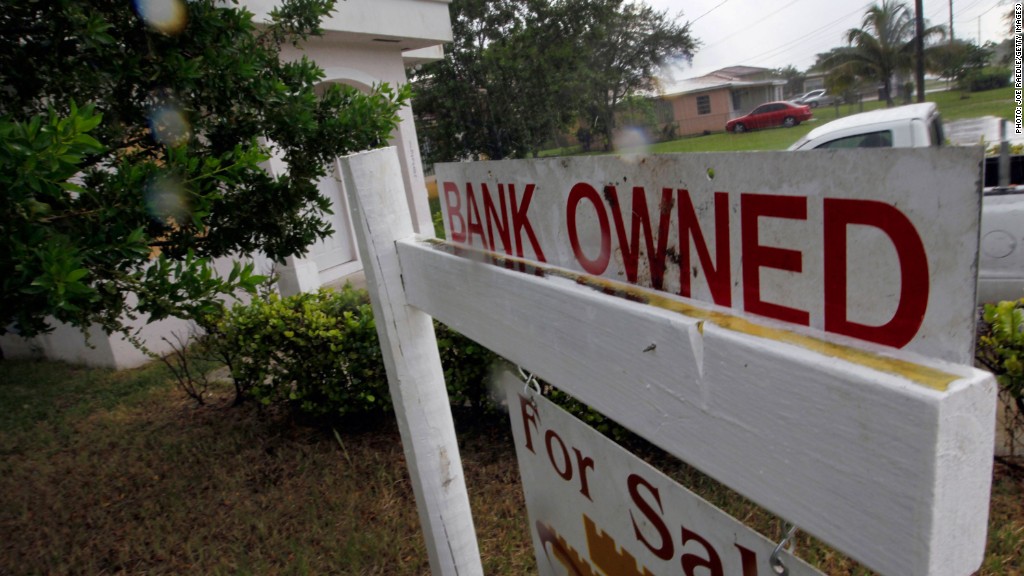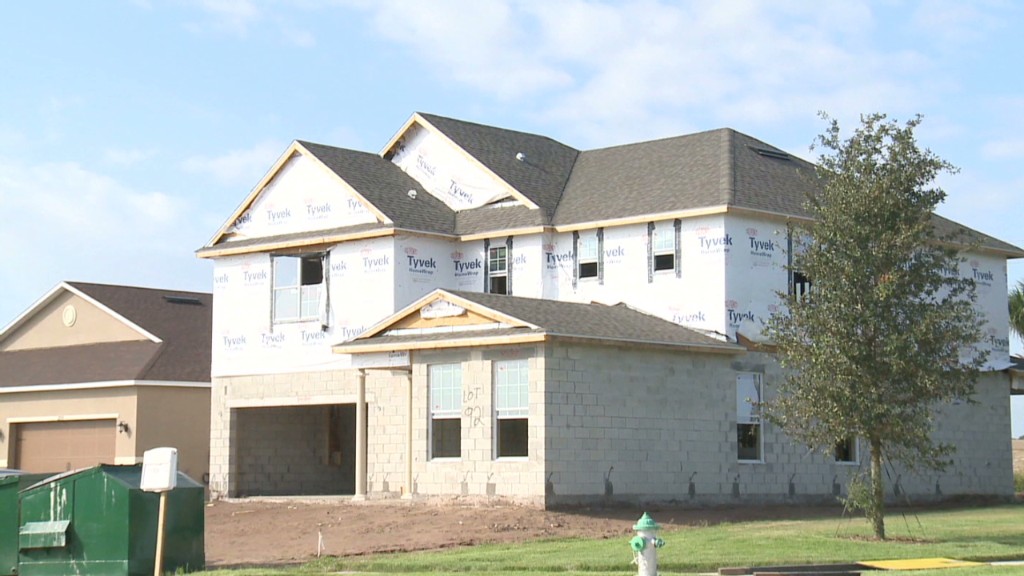
Sales of bank-owned properties last quarter hit their lowest level since early 2008, according to a new report.
There were 101,371 distressed sales during the first quarter of 2013, RealtyTrac said Thursday. That accounted for 21% of the total market, down from 25% a year earlier.
During the height of the foreclosure crisis in early 2009, 45% of all homes sold nationally were foreclosures. In many locations, such as California's Central Valley, foreclosures weren't just a big share of the housing market, they were the entire the housing market.
Related: Best deals on real estate
The most striking trend in distressed property sales now is the decline in short sales, according to RealtyTrac spokesman Daren Blomquist. These are deals on homes that are worth less than what sellers owe to the bank. Banks okay the sales to prevent the home from going through the costly foreclosure process, and forgive the unpaid debts. Nationally, short sales fell 35% in the first quarter, compared with 12 months earlier.

"The decrease in short sales was a bit of surprise given that 11 million homeowners nationwide still owe more on their homes than they're worth," said Blomquist. "Rising home prices are taking away the incentive for short sales on the part of both homeowners and lenders."
Related: 5 best markets to sell a home
As home prices rise, underwater borrowers are tempted to hold onto their properties with the hope of selling at the price they paid. That way, they won't take a big hit to their credit score for failing to fully repay their loans.
Lenders are also less inclined to approve short sales, because even the prices of bank-owned houses are going up. The average foreclosure price rose 28% during the first three months of 2013, and that's given lenders more leeway to deny low-ball short sales.
If a short sale doesn't work out, the banks aren't necessarily going to lose more money on a foreclosure, Blomquist explained.
Related: 10 big, booming cities
Distressed properties still account for a high percentage of sales in some places. In Georgia, 35% of sales were foreclosure related in the first quarter, the highest percentage of any state. In Illinois, 32% of sales were bank-owned, while in California foreclosures made up 30% of sales.
On the other hand, distressed sales made up less than 7% of the market in the District of Columbia, Massachusetts and New York.
Distressed property sales will continue to shrink as fewer homeowners fall behind on their mortgages. Lenders repossessed fewer than 35,000 homes in April, a third of the number of foreclosures repossessed during September 2010.


